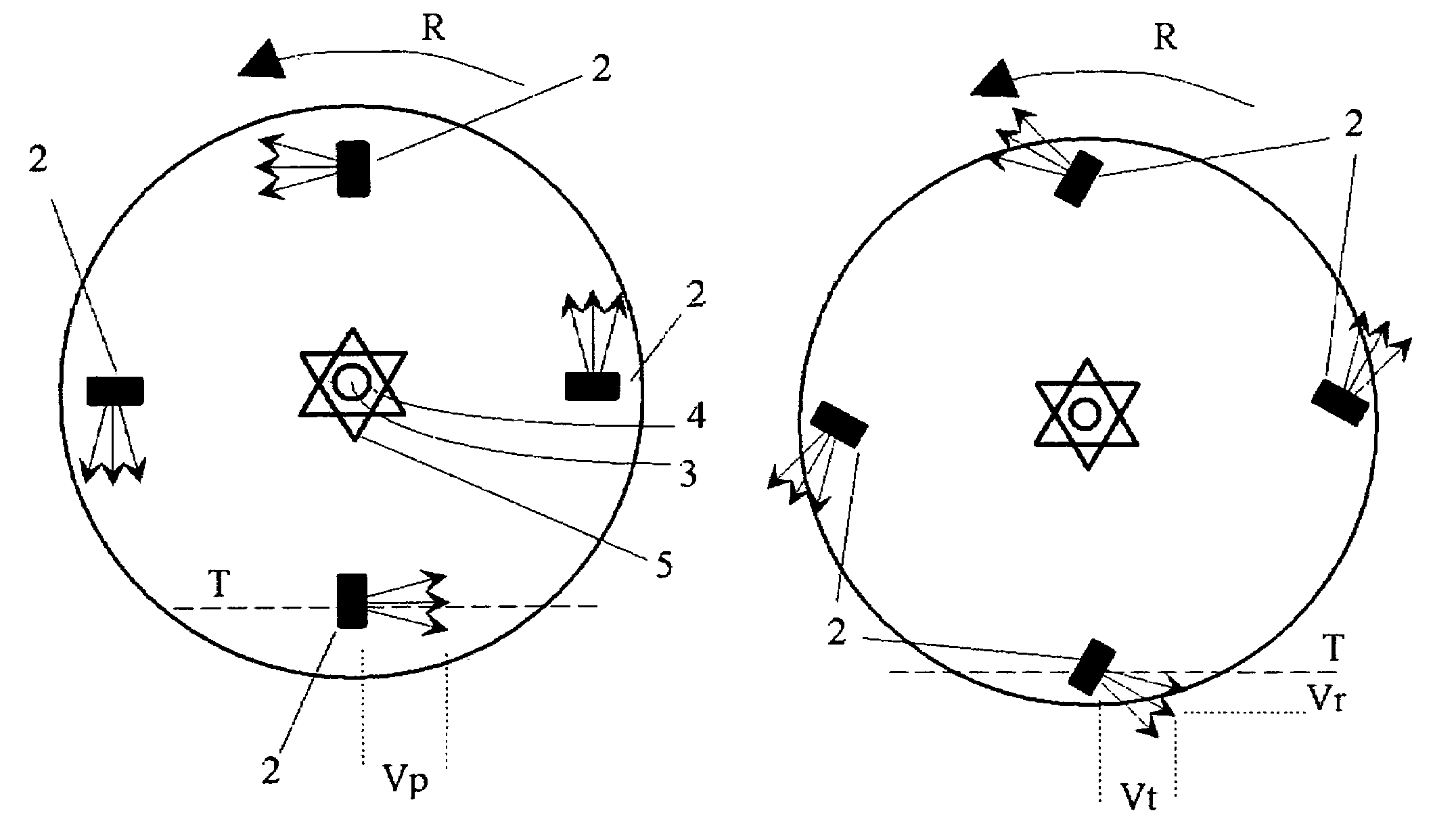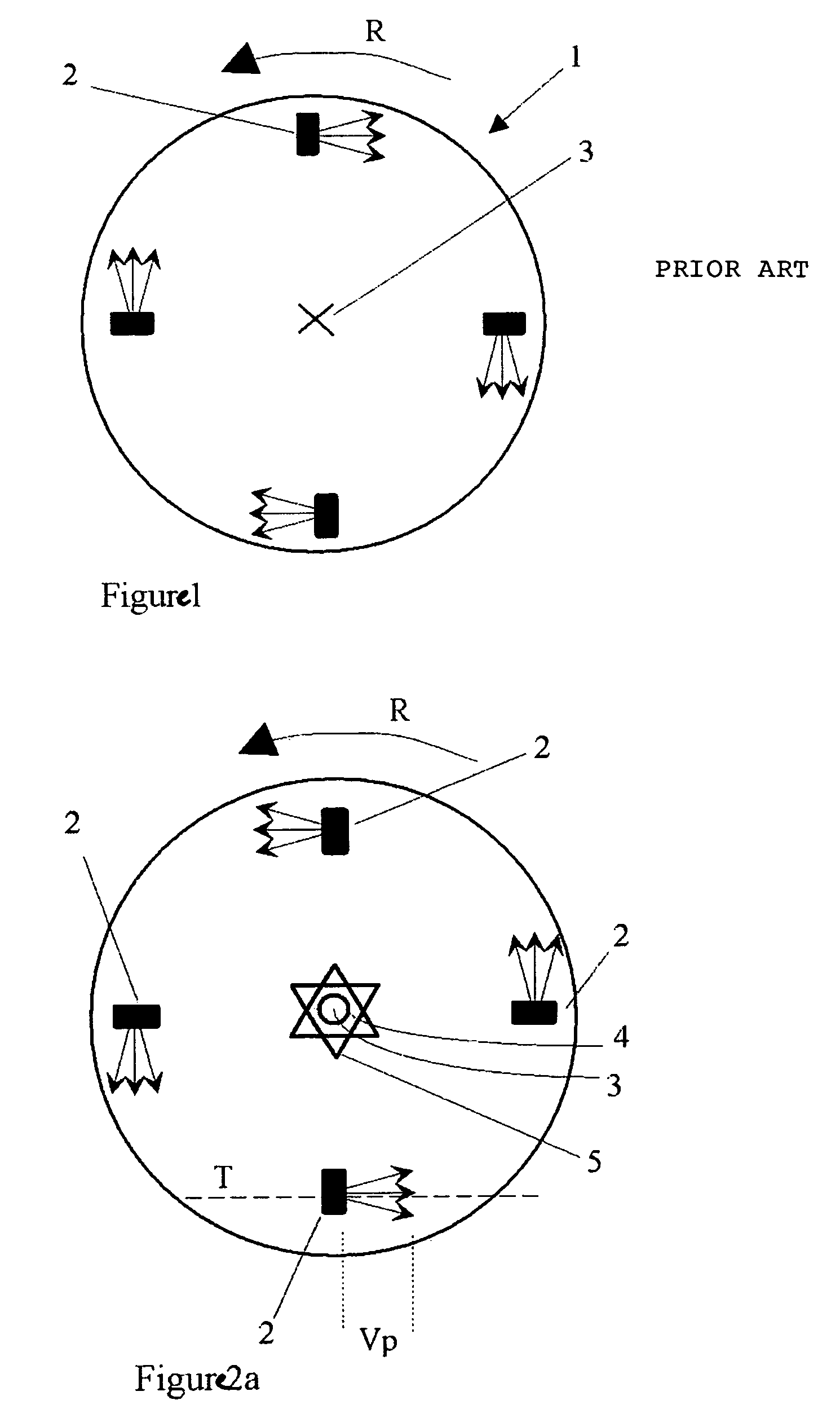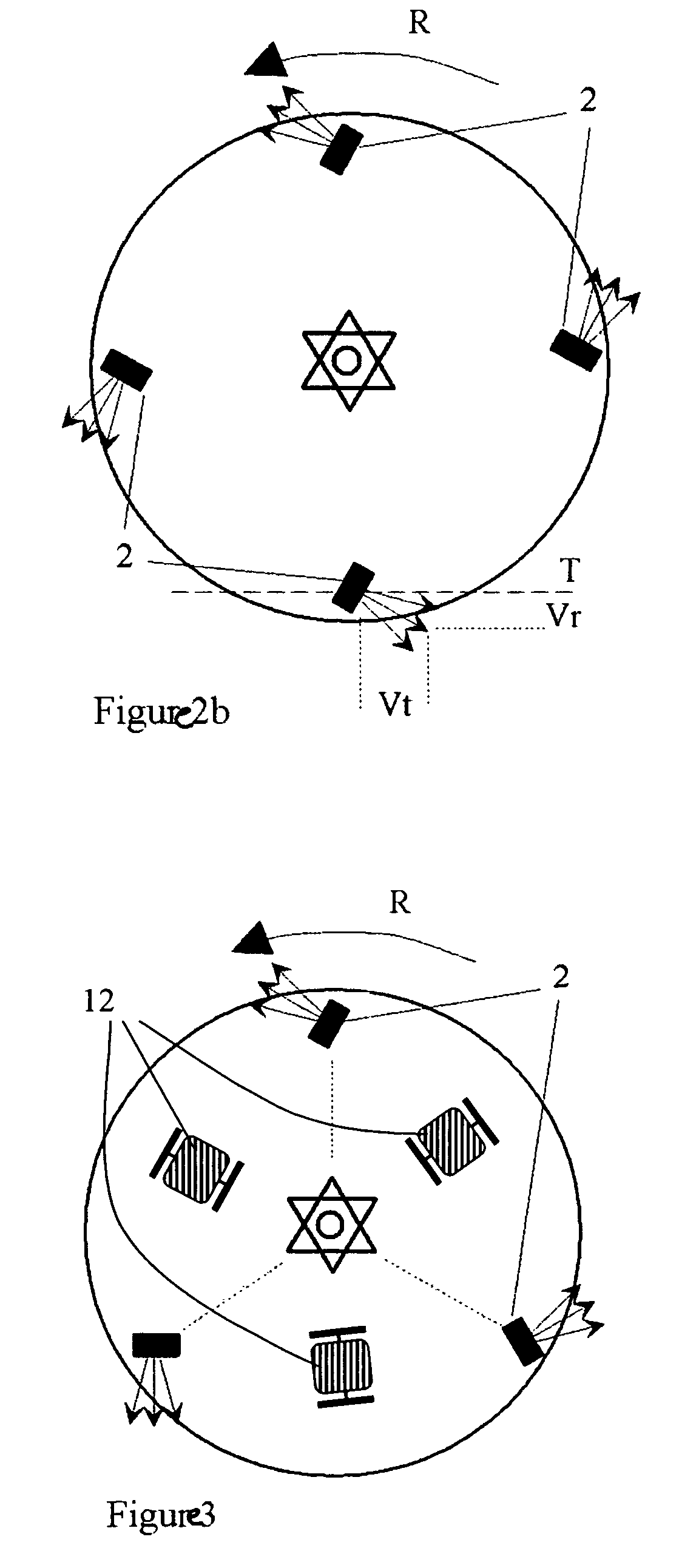Device for cleaning subsea surfaces such as ship hulls
a technology for cleaning devices and hulls, applied in the direction of electrostatic cleaning, waterborne vessels, movable spraying apparatus, etc., can solve the problems of increasing fuel consumption, requiring rather frequent cleaning, and reducing the life of components, so as to achieve optimal cleaning effect, reduce rotational speed, and improve the effect of li
- Summary
- Abstract
- Description
- Claims
- Application Information
AI Technical Summary
Benefits of technology
Problems solved by technology
Method used
Image
Examples
example
[0049]Cleaning were performed on test surfaces treated with a tributyltin (TBT) containing antifouling agent. In connection with performance of the tests water to the cleaning nozzles was recycled from / to test vessels, so that dilution of any organic compound introduced in the vessels were avoided. The operation of the rotary discs was however made in another manner which implied a dilution of all concentrations in the vessel by 12 l / minute. This effect, however, only had a 0.35% impact for first test sample and a 1.7% impact for second and third test sample. The test was conducted as shown by table 1 below.
[0050]
TABLE 1Point intimeSampleActivityRemarks4 / Oct-02Positioning of sample plates in test vessel filledwith fresh water (1170 litres). A number of 10 steelplates treated with TBT containing anti-fouling4-7 / Oct-02Leakage of organic tin compounds to water in testvessel7 / Oct-02Sample 1Sample of water in test(kl 10:00)vessel subsequentleakage but prior tofirst cleaning7 / Oct-02Cleani...
PUM
 Login to View More
Login to View More Abstract
Description
Claims
Application Information
 Login to View More
Login to View More - R&D
- Intellectual Property
- Life Sciences
- Materials
- Tech Scout
- Unparalleled Data Quality
- Higher Quality Content
- 60% Fewer Hallucinations
Browse by: Latest US Patents, China's latest patents, Technical Efficacy Thesaurus, Application Domain, Technology Topic, Popular Technical Reports.
© 2025 PatSnap. All rights reserved.Legal|Privacy policy|Modern Slavery Act Transparency Statement|Sitemap|About US| Contact US: help@patsnap.com



